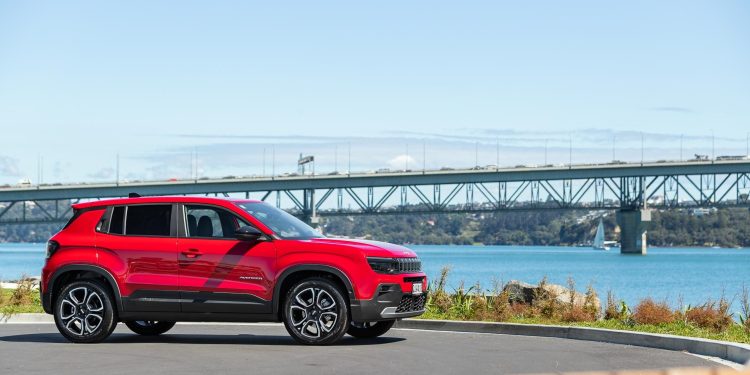2024 Jeep Avenger Launch Edition review
Words: Peter Louisson | Photos: Isaac Western
It’s a nameplate that most boomers will recall but the modern Avenger resembles the old one only on wheel count. Meet Jeep’s first EV.
I run into any number of people who state they will never go electric – we’re talking cars here – and will always drive ICE power machinery. You can understand why they might say this, prejudices aside.
Refueling is quick and easy with petrol power, while at best it takes roughly half an hour on a fast charger with an EV.
And that’s if you avoid the usual wait to hook up. Even then, if you’re on a road trip, the EV will only travel half as far as the petrol-powered vehicle.
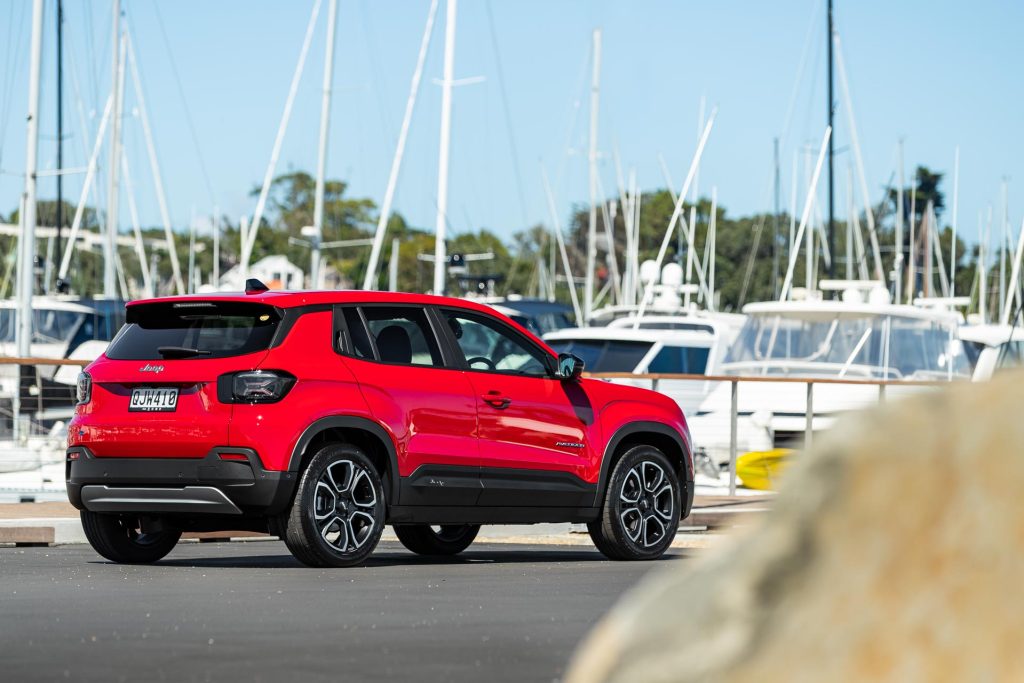
However, ICE power is slowly being legislated out of existence by global authorities, increasingly stringent emissions regs making it harder for car makers to clean up their act.
The only way they can do so is through hybridisation which requires a battery pack. It won’t be long before petrol-powered vehicles cost as much as EVs.
Eventually they will be bundled into touch because only zero emissions vehicles will be sold new. That means about a decade more for new petrol-powered vehicles.
And that means even diehard makers of such machinery, like Jeep, for instance, are being forced down the electric path.
That brings us to the return of the Avenger nameplate, seen again on a brand that has been controlled by Chrysler since 1987.
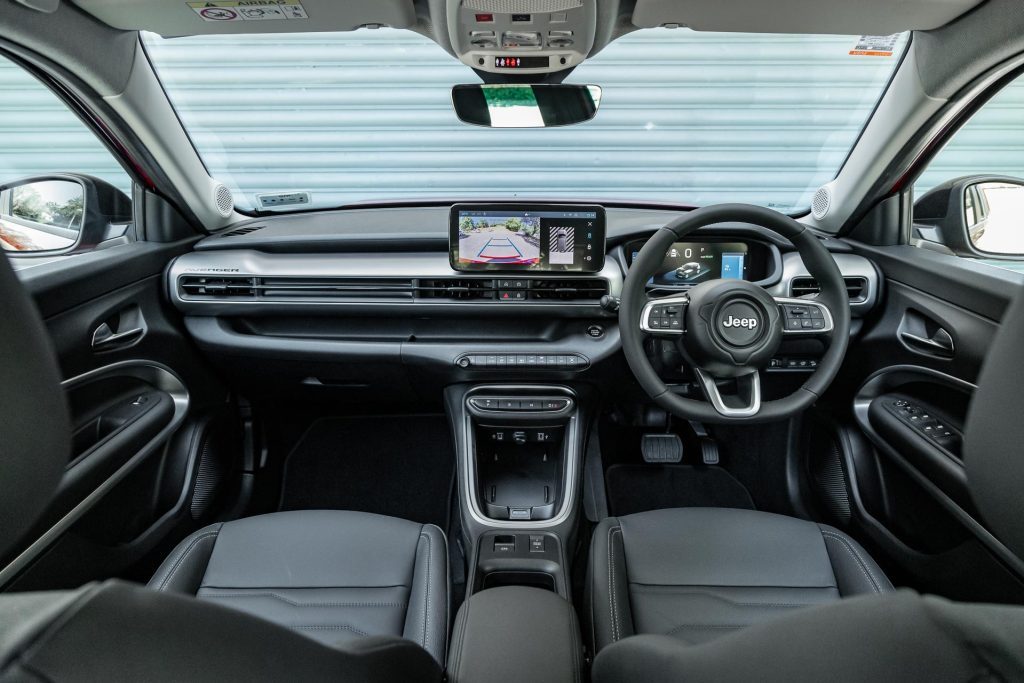
Oldies like myself will well remember the Hillman Avenger.
Why the US even got in on the act, producing the Dodge Avenger which was exported to New Zealand for a time earlier this millennium.
It’s back
So here it is again, the badge attached to the sides of the first electric vehicle from Jeep, now part of the Stellantis group.
Riding on the same electric platform as the Opel Mokka-e and e-2008, the smallest Jeep yet (4.08m, 16cm shorter than Renegade) is designed and built in Europe for the European market and arrives here initially as a Launch Edition offering for $69,990 (driveaway).
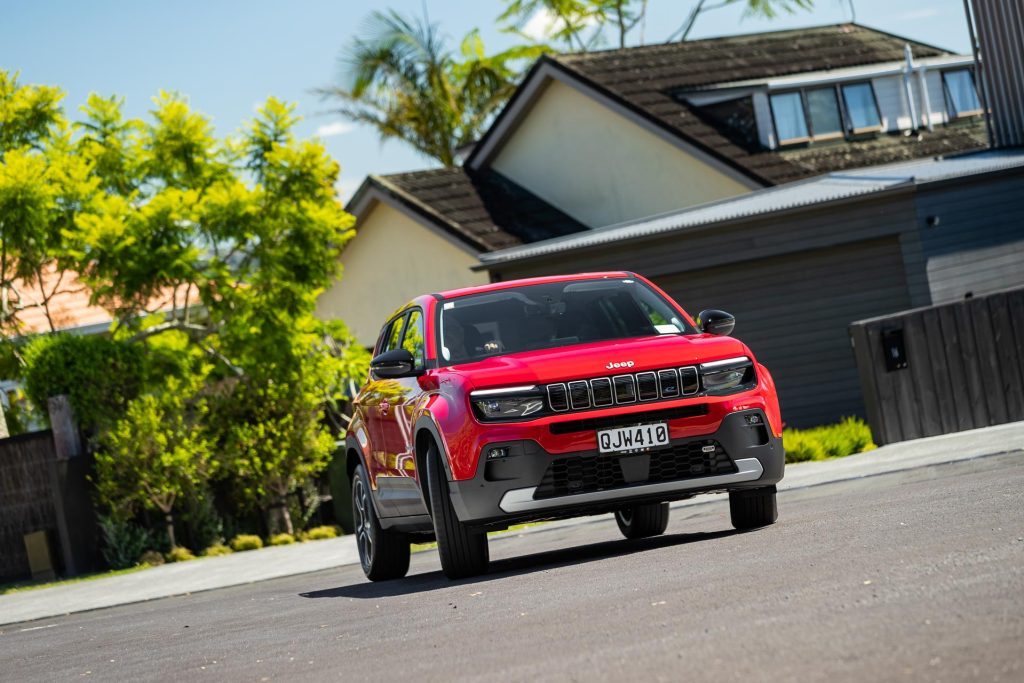
Making its debut in Jan 2023 at the Paris Motor Show, it is now here as the entry point into the Jeep family, though we’d expect after the Launch Edition models have sold, there will be a follow-up that retails for closer to $60k than $70k.
The first fifty special units get two-tone machined alloys, each engraved with the Jeep seven-slot logo, and leather-trimmed bucket seats.
Award winner
It may be the first fully electric offering from Jeep but it has clearly impressed motoring critics, taking out the 2023 European Car of the Year gong, the first time a Jeep has won this accolade.
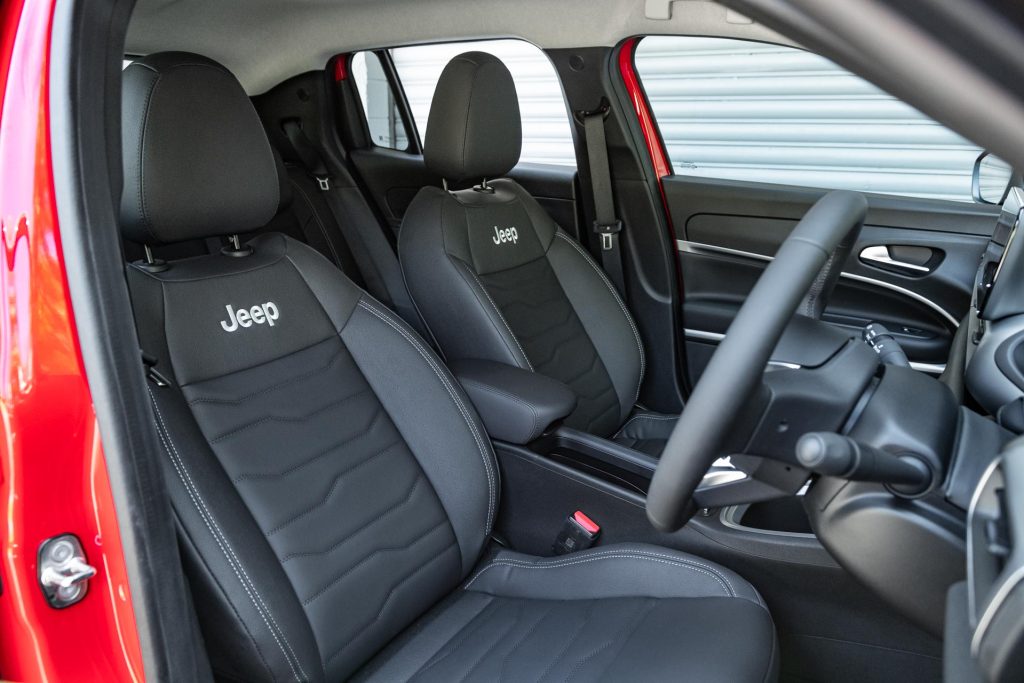
It swept the field too, almost half of the 55 judges rating it their first choice, clearing out from the second-placed VW ID. Buzz, and Nissan Ariya in third position.
Certainly from a styling standpoint this has serious appeal, the seven-slot grille finished in plastic instead of metal and with the telltale blue e-badge signifying its green credentials.
At the rear, the X-shaped stoplights remind of Jeep Renegade’s while the profile is sweet, nicely proportioned, with short overhangs.
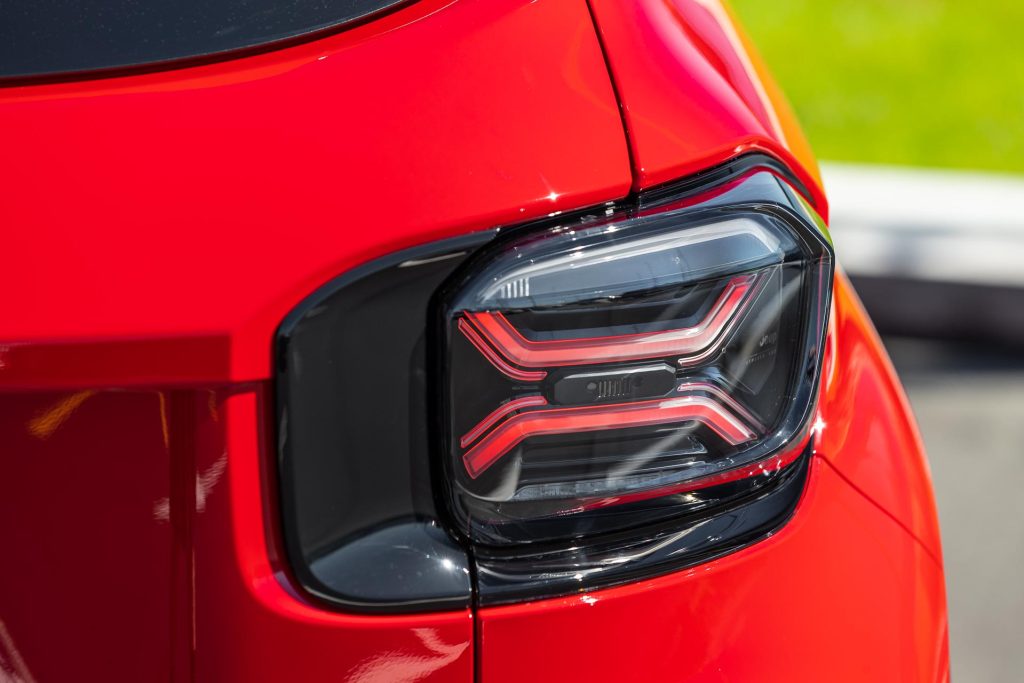
Instead of a squared-off shape, like traditional Jeeps, the lines are softer, more rounded. It’s a really good look, amongst the best in the compact SUV sector.
The interior is not quite as flash, with rather too many hard plastics in something with an almost $70k sticker price. They line much of the dash, the centre console, and plenty more besides.
And while there are numerous storage spaces, most are unlined, so items clatter about on the go. There’s a deep bin behind the wireless charger below the gear selector.
The latter consists of a row of buttons that will be a bit of a stretch for some.
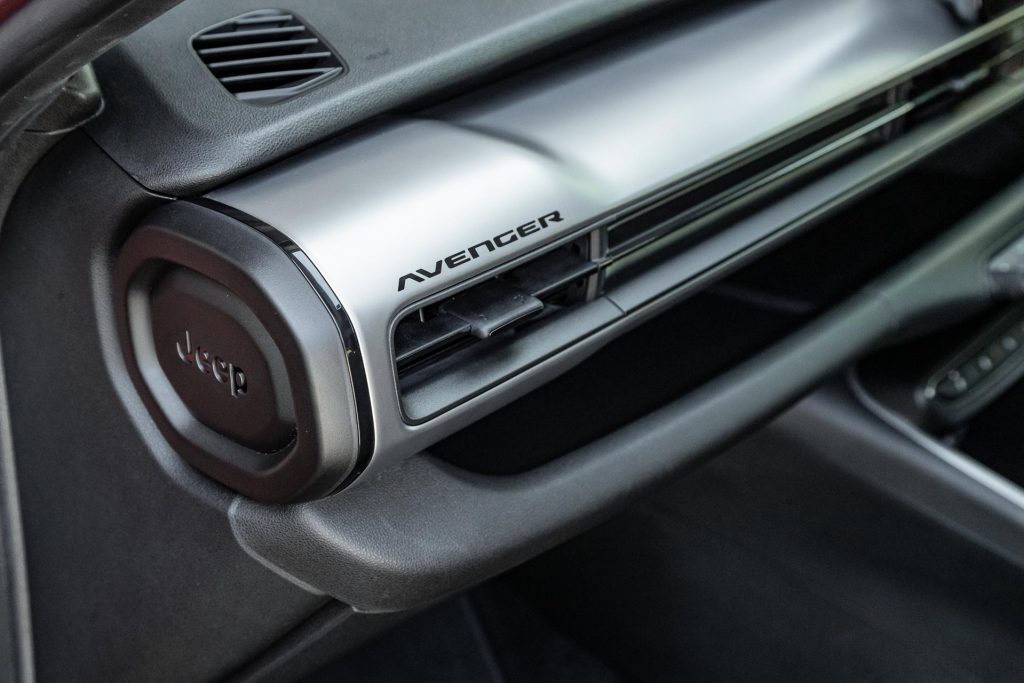
We rather like that not everything is assigned to the 10.25-inch touchscreen – heating and ventilation controls are separate – while those functions that are most often cancelled can be accessed by shortcut buttons.
Small but roomy
Despite its compact size, which makes placing it on road oh so easy, the Avenger has a reasonable amount of space both in the rear seats and in the luggage compartment, the latter accessed by a powered fifth door.
There’s said to be 380L of capacity back there. Leg room is hardly generous in the cheap seats but the accommodations for two adults are okay, the lack of a sunroof meaning decent headroom.

In the boot, there’s a place beneath the floor for charging cables, though the emergency charger is a little too big to fit, which means it sloshes around in the boot or back seat footwell.
Don’t bother looking under the hood for extra storage space.
Under there instead is an electric motor that shunts out 115kW and 260Nm, a little more power than what close relatives e-2008 and Mokka-e get, though no more torque.
The output goes to the front wheels only. Oddly, there are six drive modes, the normal ones plus sand, snow and mud, presumably altering TC, while there’s also hill descent control.
And with 200mm of ground clearance, along with 360-degree plastic cladding and front and rear skid plates, this at least has a semblance of off-road ability, unlike most of its rivals.

Good enough range
Of course, it will mainly find its way around city streets where Jeep suggests the possibility of 570km of roaming from its 54kWh (51 usable) battery pack. However, that’s doing 50km/h or less; the combined WLTP figure is 400km.
We found energy use in the 17-18L/100km area for the most part, and range of about 330km, most of this mainly on 100km/h roads.
It made it around our longer drive loop comfortably enough, one of the few vehicles with a small(ish) battery pack that has managed this. We used Eco a bit but Normal is much better on the highway. Sport’s good for passing.
It has 100kW of onboard charging capacity so can ostensibly be rezipped from 10-80 per cent in just under half an hour using a fast charger. An 11kW wallbox can restore a dead battery to fully charged in 5.5 hours, apparently.
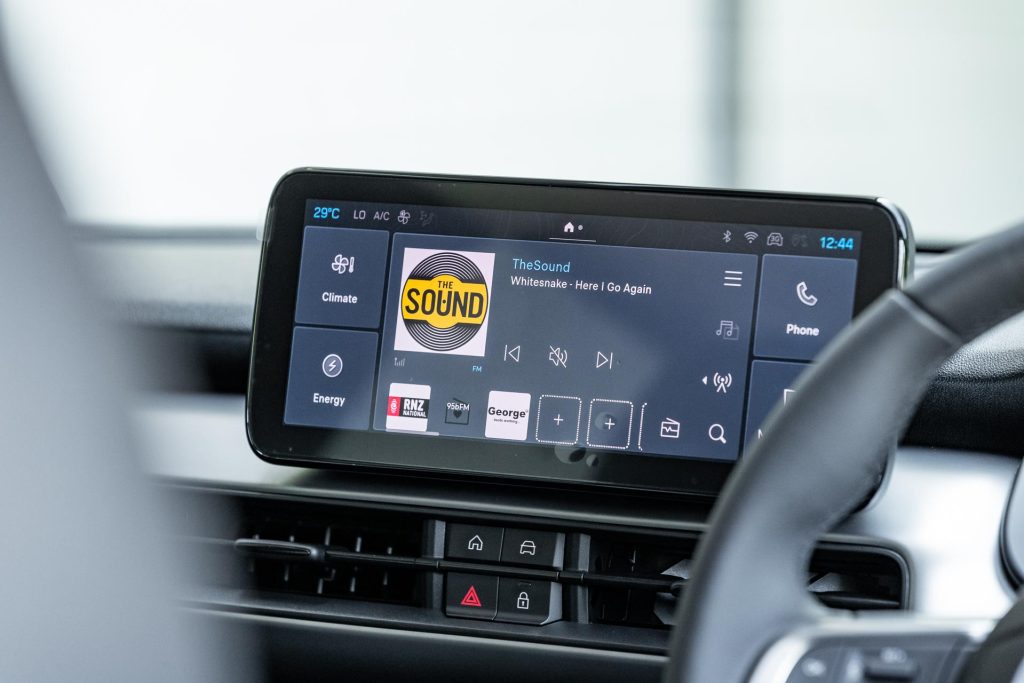
Our wee emergency charger added about 10 per cent charge in 3 hours. That’s the nice thing about modestly sized EVs; because this battery pack weighs in at 340kg, the total kerb weight of the vehicle is only 1600kg so it doesn’t feel obese.
Not that it is a speedster exactly; 0-100 still takes 9sec (our best was 8.63sec) but that’s no different from petrol-powered rivals in the same class.
An overtake is done in 5.7sec (163m). The most impressive aspect of performance is the emergency stop from open road speeds, dusted in 34.7m.
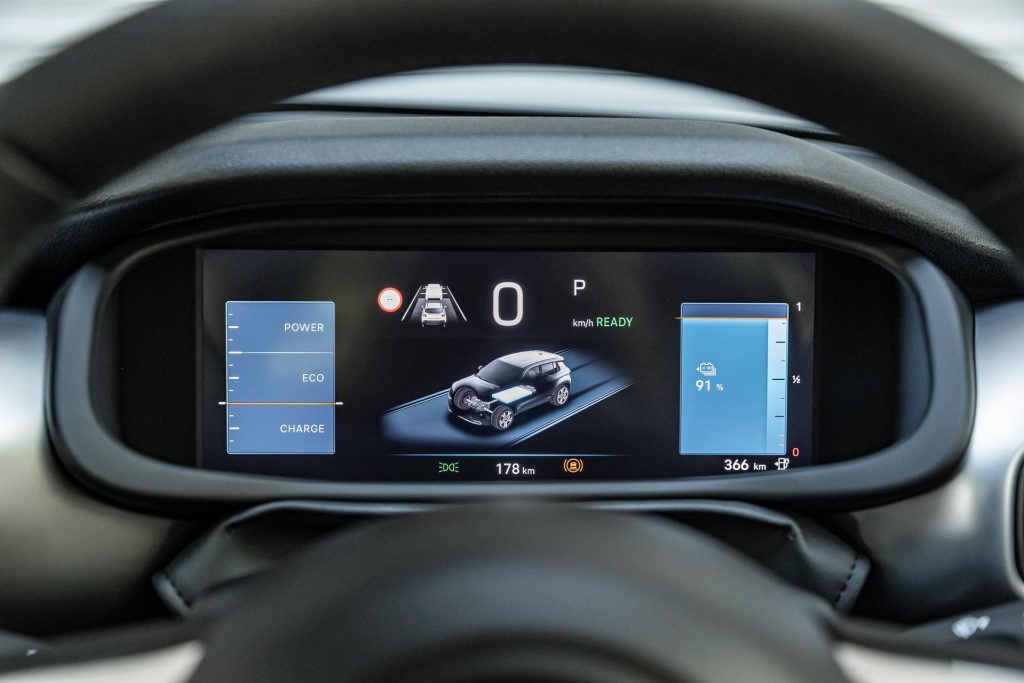
Regen options are limited to a D and B button, so you need to look down to change it.
Smooth progress
There are a couple of other real drawcards to this vehicle. The first is its truly plush ride quality, and well controlled road noise to go with that.
But it’s not at the expense of road manners that also impress. It’s amongst the best handling Jeeps I’ve driven. And we’re beginning to get the feeling that this is becoming the norm in the electric area.
Stick a big weight between the axles low in the chassis and it acts like a keel on a yacht, offering stability and nifty changes of direction. Course it helps not having a boat anchor of an engine hanging over the front wheels.
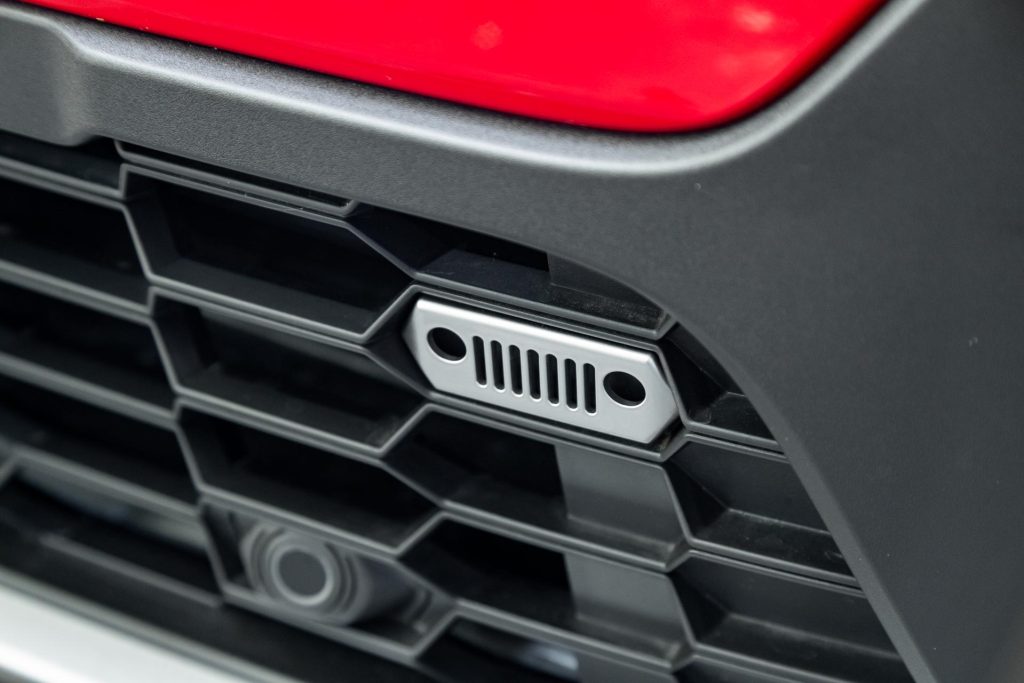
We suspect most EVs manage to come close to a 50/50 weight split which is why even the front drivers handle with panache. And for that matter even those that ride a little higher than sedans or hatches.
And another bonus, looks and zero emissions aside, is the spec level of this vehicle.
Setting aside Launch Edition items like special wheels and powered leather pews, our’s also featured the electric fifth door and driver’s seat, autolocking and unlocking doors, seat heating, smartphone connectivity, front and rear parking sensors plus self parking, enough safety features to warrant a five-star Euro NCAP rating, LED head and fog lights, dual zone AC and a heated screen.
There’s no sat nav but traffic sign recognition is handy. The Avenger comes with a three-year/100,000km vehicle warranty and eight-year/160,000km battery guarantee.
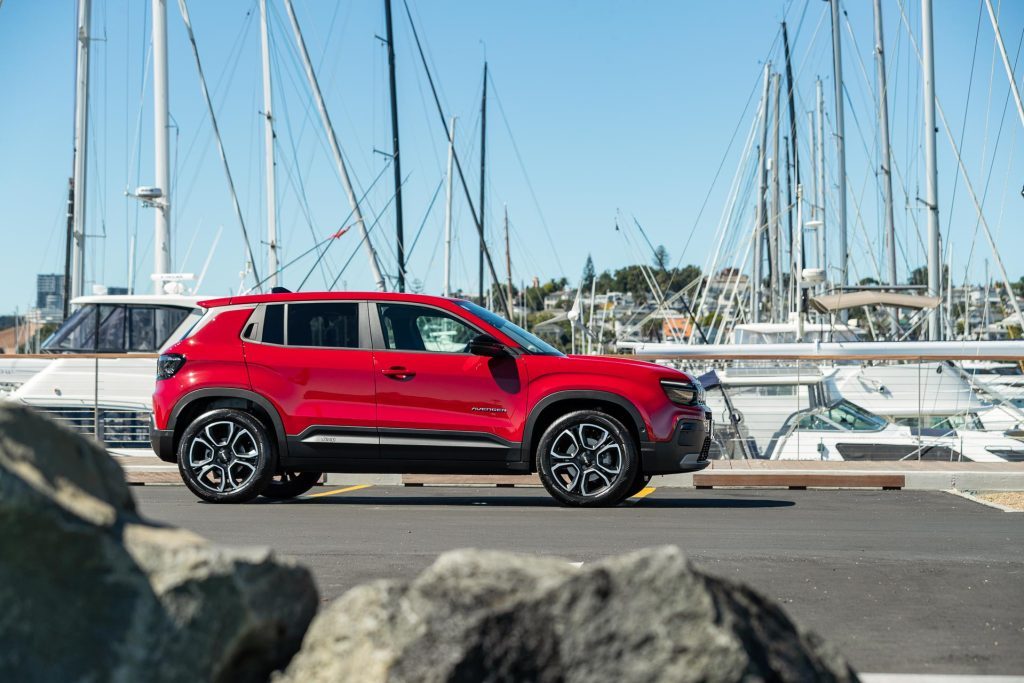
Quality of cabin plastics aside, there’s a lot to like about Jeep’s first foray into the electric arena. Enough to persuade the ICE power zealots? Probably not but a good start all the same.
Like-priced front-drive rivals include close relatives Mokka-e and Peugeot e-2008, along with Atto3 Tachyon, or there’s the rear-drive Tesla Model Y.
This article first appeared in the March 2024 issue of NZ Autocar magazine.
| Model | Jeep Avenger Launch Edition |
| Price | $69,990 |
| Motor | 115kW, 260Nm |
| Battery | 51kWh net |
| Range | 400km |
| Drivetrain | single-speed auto, FWD |
| Energy Use | 15.4kWh/100km |
| C02 Output | 0g/km |
| 0-100km/h | 8.63sec |
| 80-120km/h | 5.74sec (163m) |
| 100-0km/h | 34.68m |
| Stability systems | ABS, ESP |
| Safety | AEB, ACC, BSM, LDW, RCTA, ALK, AHB |
| Luggage capacity | 380L |
| Tow rating | Not rated to tow |
| Service intervals | 12 months, 12,500km |
| Warranty | 3yrs, 100,000km |
| ANCAP rating | Not yet rated |
| Weight | 1600kg (claimed) |


